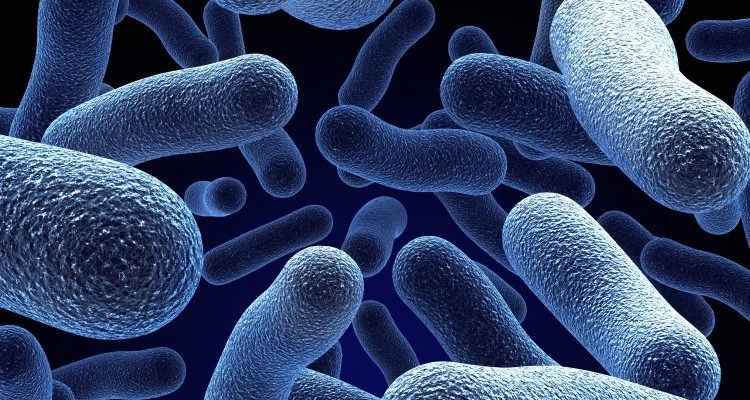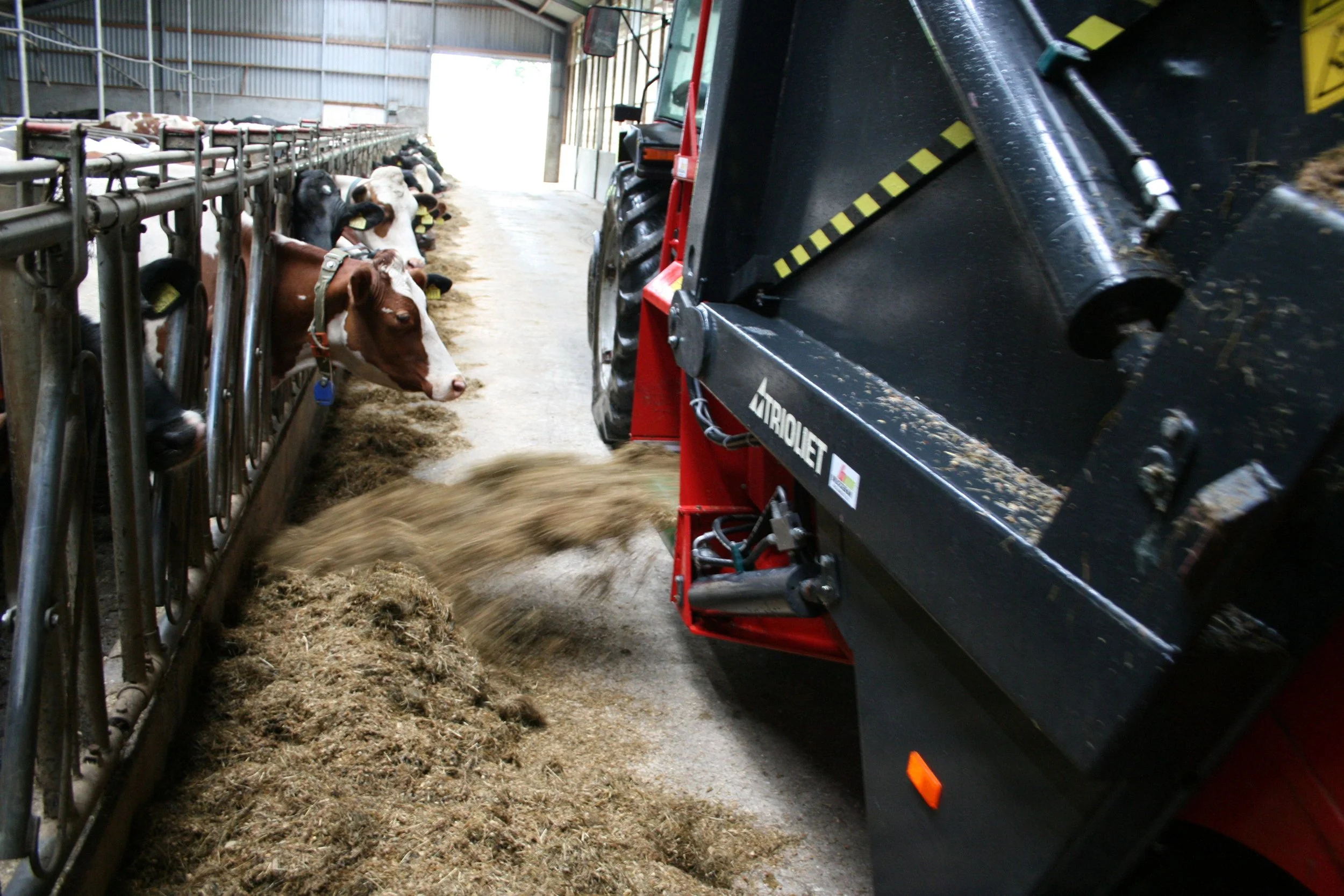How many bacteria do you need to make good silage?
More of a good thing is always a good idea isn’t it? Well what seemed like a good thing at 11 o’clock in the evening when someone suggests opening another bottle, might not feel quite so wise the following morning. As the wise people at the party keep reminding me, enough is sometimes enough. What’s this got to do with silage - if you’ve read many of these articles, you will already know that silage mimics much of life and sometimes when making silage you need to know when enough is enough.
Does size really matter?
When it comes to silage, yes it does; it really does. As anyone with a shiny metal addiction knows big is always better, and big and brand new is always best. But this time I’m thinking about the tiny, and the microscopic because this is all about bacteria (again). What really matters (or so I thought) is not what size your bacteria are but how many of them you have.
The argument used to go like this:
You need lactic acid to turn your forage into silage
You need bacteria to turn sugars into acid
The faster you drop the pH the less forage losses you suffer
The more bacteria you have the faster the pH will drop
If you add more bacteria the job will be done quicker
This thinking is often used to justify the use of bacterial inoculants and it has some truths. The problems start to come when you are faced with a “challenging crop” that might be a bit tricky to ensile. It’s tempting to up the dose rate on these crops, to “give it a bit of helping hand” with an extra dose of inoculant. But more isn’t always better because the number of bacteria is actually misleading.
My inoculant is stronger than yours
Silage inoculants are expensive, that’s a fact, somewhere over a million pounds/euros/dollars a tonne. They can also be great value too because you don’t need very much and they offer some massive savings in forage losses. Inoculants are often termed as an investment in your silage that can produce a great return. The problem is how to choose one product over another; how the hell do you know what is a good investment?
Some bright spark came up with the idea of asking how many bacteria are there in the pack? On the surface this seems like a sensible question because you’re buying bacteria so why not ask how many you get for your money. The figures are usually quoted in cfu - colony forming units - and range from around 250,000 to 2 million per gram; that sounds like a lot but what does it mean? Some of you will have spotted that one of these numbers is 8 times bigger that the other, so does that make this inoculant 8 times strong, or 8 times better?
Does it matter how many bacteria there are in my inoculant?
Simple answer - no it doesn’t. Whatever someone might tell you, it just doesn’t matter how many bacteria there are, but it does matter what strain they are. That’s because different strains of the same type of bacteria behave in different ways. Just imagine athletes and how they differ, runners, high jumpers, hammer throwers etc. Then think about the runners, some are powerful sprinters like Usain Bolt, some are middle distance like Laura Muir and some are endurance long distance like Mo Farah. All runners, so the same, but different.
Bacterial strains are the same. In the early phase of silage fermentation we need the bacteria to grow, multiply and produce acid quickly. These characteristics vary between strains due to three distinct differences:
Lag phase (LP)
Doubling rate (DR)
Quorum Sensing (QS)
The lag phase is just how long it takes the bacteria to get on with it and start working. This time can vary between a few minutes to 4 hours.
The doubling rate is also easy to understand, it's effectively how long it takes for the population to double in number. For lactobacillus plantarum, this varies from (in ideal conditions) 20 mins to around 120 mins. In the clamp it will be a little slower and depends on dry matter and temperature but it has been measured at as little as 30 minuets for some really fast acting bacteria.
Quorum sensing is a bit more complicated but it’s a bit like a public information system that allows the bacteria to communicate without voices or keyboards. Bacteria produce chemicals called autoinducer molecules in response to their environment. Other bacteria in the colony then react to these chemicals. Imagine hearing people the other side of a high wall, you might hear singing, laughter or screaming and you will probably react differently to each of the sounds. Bacteria don’t listen but they do the same thing just with chemicals. Once populations get to really high density, the chemicals instruct other bacteria to reduce cell re-production.
These differences have a huge impact on how a population develops. As an example, the table below shows how three populations of different strains will develop in the same conditions. This assumes they all have the same lag time and QS activity, just different doubling rates (DR). The populations are shown in millions (m) at various hours after inoculation within the clamp.
Strain A B C
Cfu/g 1m 2m 0.3m
DR 70mins 72mins 66mins
Hrs 1 2 3 1
Hrs 5 15 26 6
Hrs 10 165 331 118
Hrs 15 3,245 4,254 2,353
Hrs 20 48,047 54,702 46,759
Hrs 25 711,345 703,475 929,082
In this example, strain C doubles just 8% faster than strain B but despite there being more than 6 times the concentration in the initial inoculation, the population of C is 30% larger than A or B after just 25 hours.
This table also explains why different inoculants have different recommended dose rates. The manufactures trial different doses of inoculant and select the rate that achieves the most cost effective results. Now just imagine a 3D table that includes different lag times and QS activity and you can begin to understand why the strain is more important than the concentration or dose rate. If it’s all a bit too much, just remember the takeaway fact - don’t get hung up on the number of bacteria in the inoculant.
How do I choose the right inoculant for my silage?
Get some help would be my advice because it’s a potential minefield. Unfortunately the UK doesn’t have a regulatory testing body to confirm manufacturers claims like they do in Germany. If you can, get something that is independently tested and approved, like the DLG do in Germany because then you know that however many bacteria there are, they will do exactly what it says on the tin.
Whilst thinking about what is says on the tin, stick to the recommended dose rate. Adding extra is unlikely to make any difference because the bacteria will just use the QS to turn off the reproduction phase sooner. Adding more inoculant than is recommended is probably just a waste of money. In one set of trials the dose rate was doubled over the base rate, but the fermentation results were less than 5% increased over the base. This is clearly a waste of money, so choose carefully and stick to the recommendations to get the best value.
If you want to know more about what inoculant to choose for your silage or would like to discuss any other aspects covered in this series, contact me at jeremy@silageconsultant.co.uk



